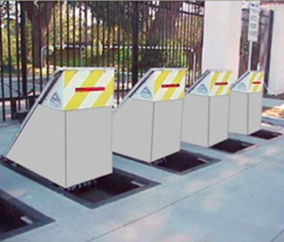 As the 16th municipal center incorporated in the State of California, the City of San Luis Obispo (SLO) has cultivated myriad traditions over its 250-year history. The Downtown SLO Farmers’ Market, one such beloved event, transforms the downtown area into a vibrant hub where upwards of 10,000 residents and visitors alike congregate to eat, shop, watch shows, and connect with the community.
As the 16th municipal center incorporated in the State of California, the City of San Luis Obispo (SLO) has cultivated myriad traditions over its 250-year history. The Downtown SLO Farmers’ Market, one such beloved event, transforms the downtown area into a vibrant hub where upwards of 10,000 residents and visitors alike congregate to eat, shop, watch shows, and connect with the community.
“The farmers’ market draws visitors downtown,” said California Joint Powers Insurance Authority (California JPIA) Senior Risk Manager Tim Karcz, who is assigned to San Luis Obispo. “It’s impressive—much more than just the typical farmers’ market—with music and street performances every Thursday evening.”
Construction will begin this spring on a sophisticated system that will enhance the event by more effectively protecting pedestrians and channeling automobile traffic.
Triggered by an incident at the Santa Monica Farmers Market during which a motorist bypassed barricades, killing 10 pedestrians and injuring 63 others, the San Luis Obispo city council directed the Public Works Department to upgrade traffic control measures at entry points to their local market.
“Increasing occurrences of the willful use of vehicles as weapons and occasional occurrences of vehicle operational errors has increased the need to protect the community,” said city manager Derek Johnson. “If we invite people to our downtown, we have an obligation to make those people as safe as we can.”
The city’s plan, based on industry best practices and case studies of safety improvements for outdoor markets and public events, will prioritize installation of safety barriers at all roads leading into the market, which takes place on a five-block length of Higuera Street between Nipomo and Osos streets within the Historic Downtown Core.
San Luis Obispo will implement three different types of barriers: inground barricades that can be manually lifted and retracted when roads are to be closed and reopened, decorative bollards that will limit vehicle access to the Mission Plaza, and an attenuator truck/trailer for placement over the bridge deck.
“We wanted a product that had been tested in the field,” said Johnson. “While there are some systems that are powered through electricity or hydraulics, we wanted to be able to move something. We chose a cantilevered system that is elegant and simple.”
“One of the biggest challenges,” he continued, “is that we’ve got development that dates back to the mid-1700s. We can’t do a lot of excavation because we run into cultural resources and infrastructure. The system that we picked required minimal digging.”
In an effort to engage and promote understanding among those most affected by the installation, the multi-point solution was developed in concert with immediate neighbors, business owners, and street vendors, as well as public employees representing police, fire, community development, public works, and parks and recreation.
Complementing the barriers will be crosswalk striping enhancements and ADA-compliant pedestrian traffic signal improvements including countdown signal heads and audible push buttons.
“This bollard solution is one example of how San Luis Obispo is a dynamic, constantly improving city,” said Karcz. “They are a big city with a lot of exposures, but they take full advantage of the California JPIA’s services, and I think they’re better for it.”
San Luis Obispo’s Safety Committee, consisting of representatives from all city departments, meets regularly to review safety-related matters such as emergency preparedness, new legislation, OSHA requirements, best practices, and policies and procedures. They share agendas, actions, and safety-related documents with their coworkers through the city’s internal communications site, which is accessible to all employees. The city performs routine fire drills and active shooter training, among other types of educational forums. California JPIA staff provide assistance evaluating situations of concern.
“The California JPIA offers expertise beyond that which is held by existing staff,” said Johnson. “Risk management is multifaceted: It can involve fund management, claims review, education about safe practices, evaluation of working conditions, and review of insurance requirements. It is vital to have access to experts in these areas to supplement the knowledge of staff, be a sounding board for unusual circumstances or requests, and ensure the city is well-protected.”
Providing innovative risk management solutions for its public agency partners for more than 40 years, the California JPIA is one of the largest municipal self-insurance pools in the state, with more than 100 member cities and other governmental agencies. Members actively participate in shaping the organization to provide important coverage for their operations. The California JPIA provides innovative risk management solutions through a comprehensive portfolio of programs and services, including liability, workers’ compensation, pollution, property, and earthquake coverage, as well as extensive risk management training and loss control services.
Decorative bollards will be installed at the entrance to the Mission Plaza.
